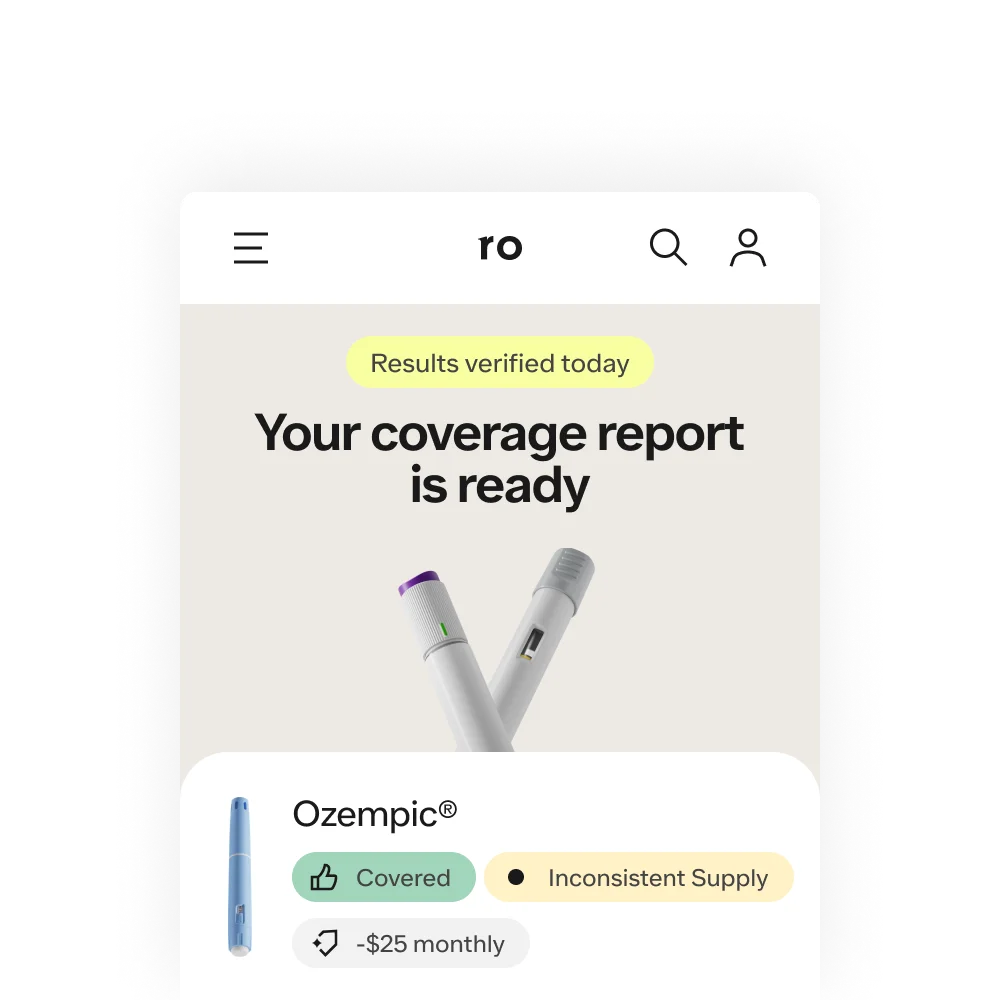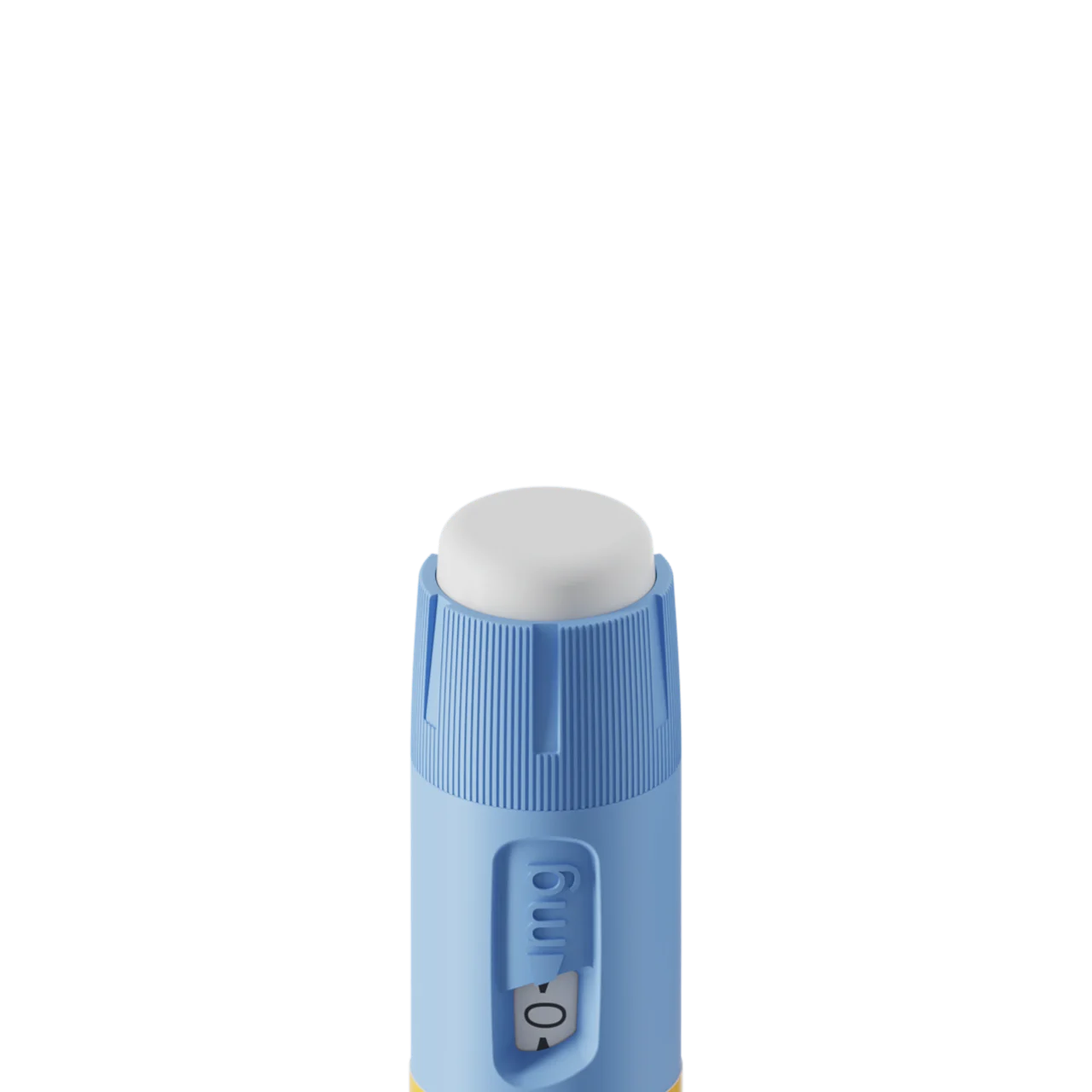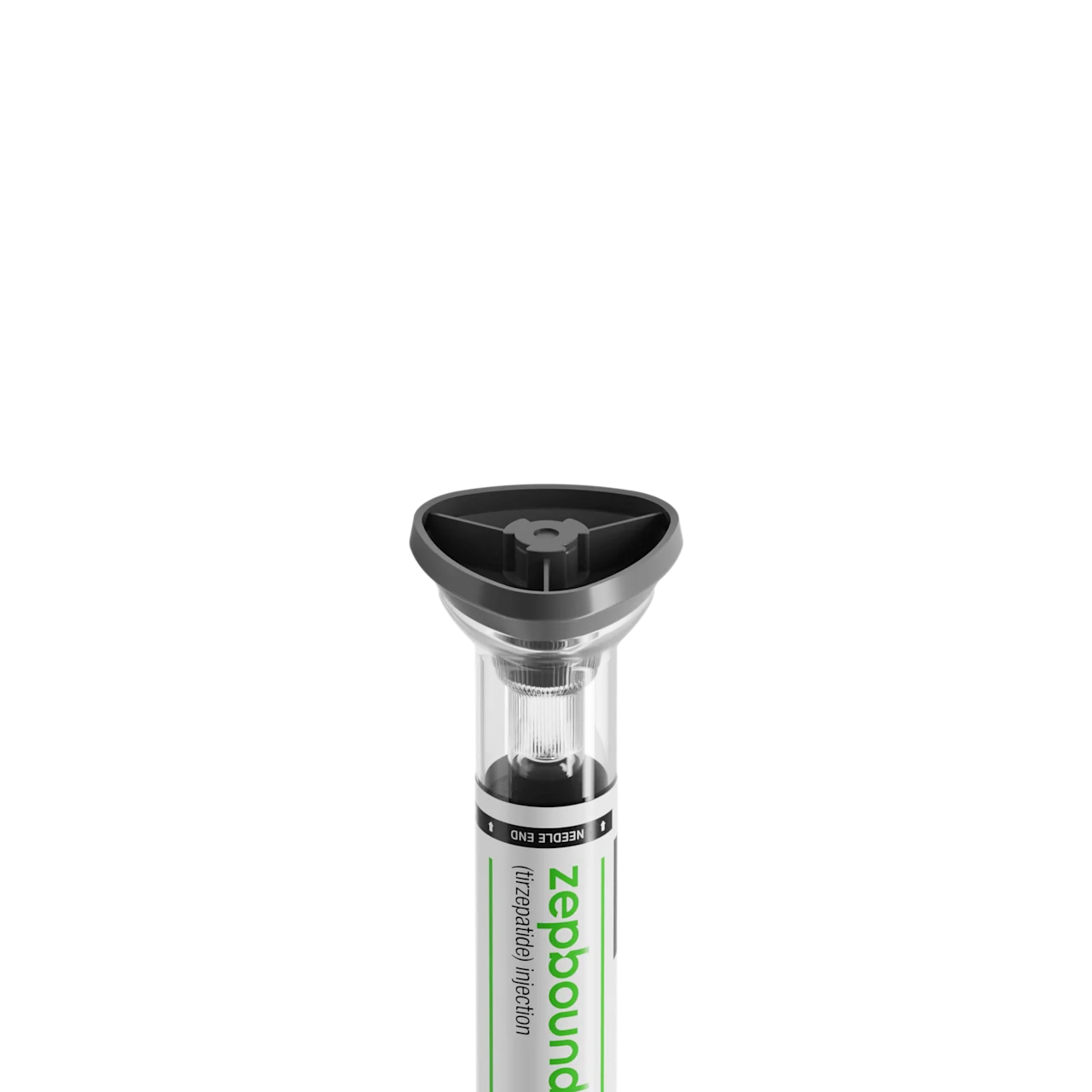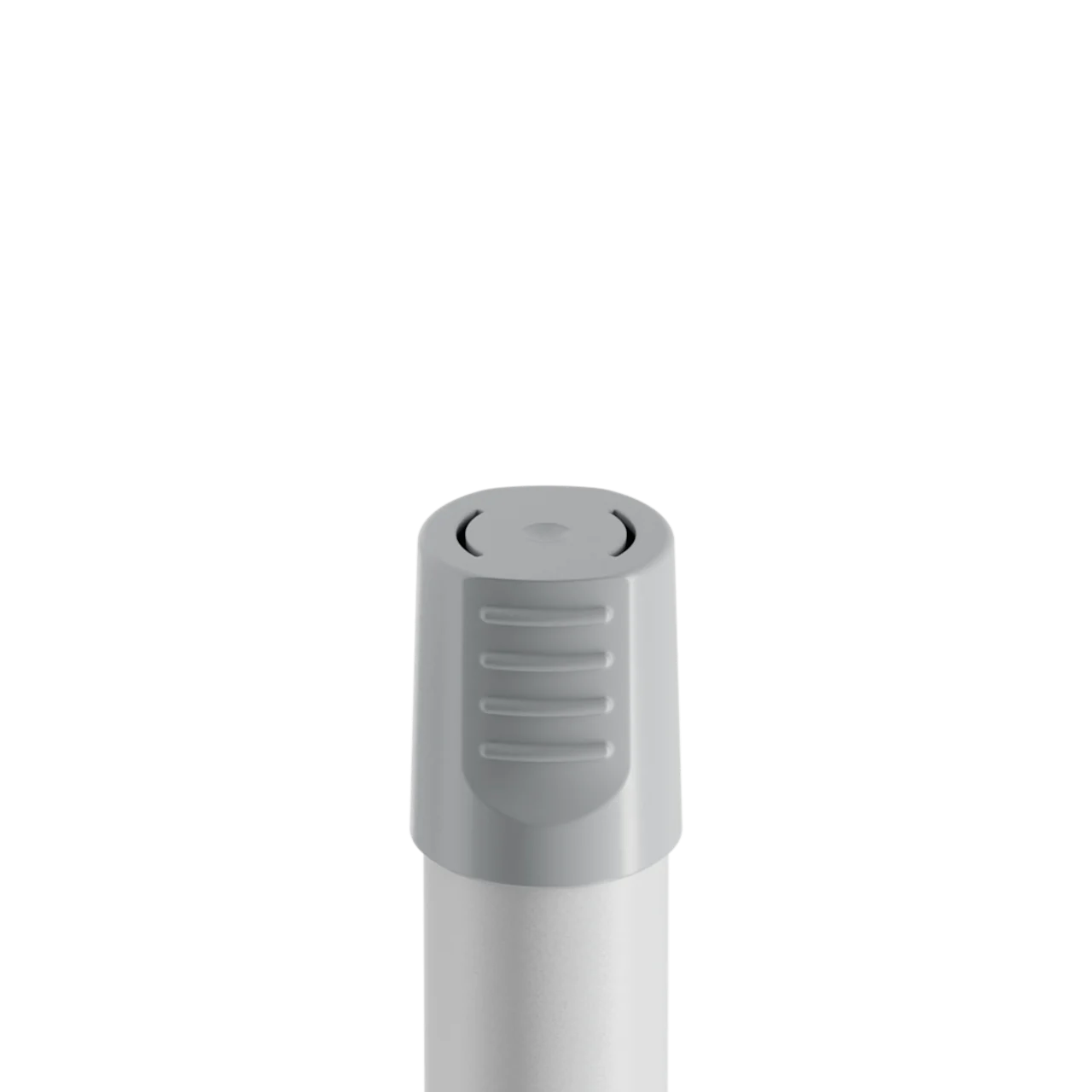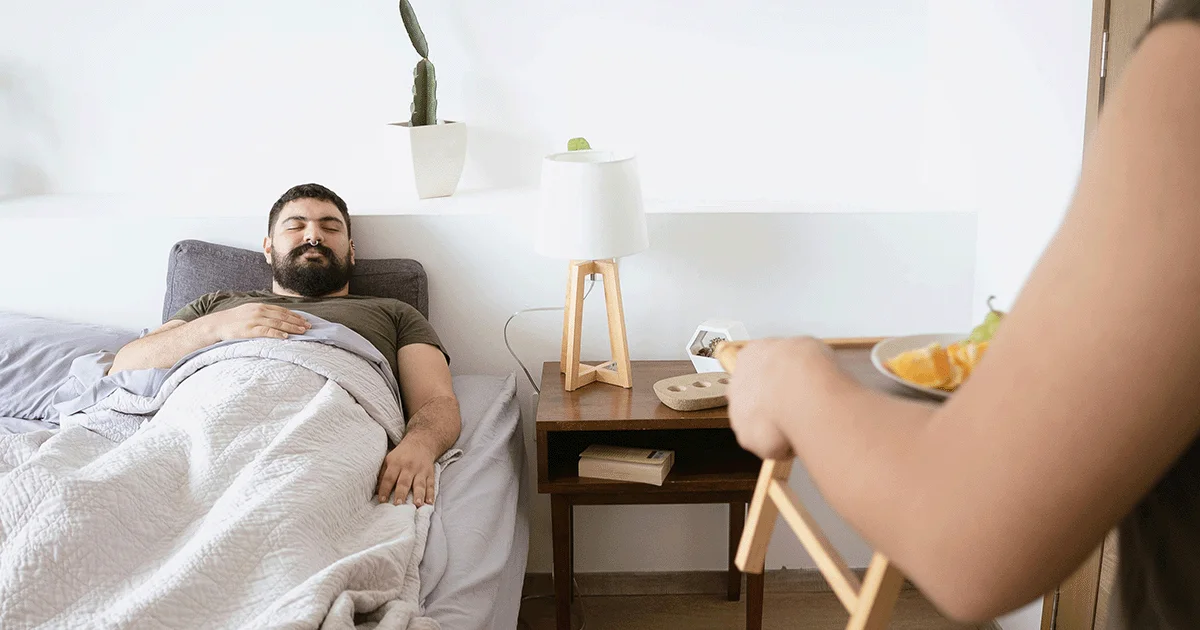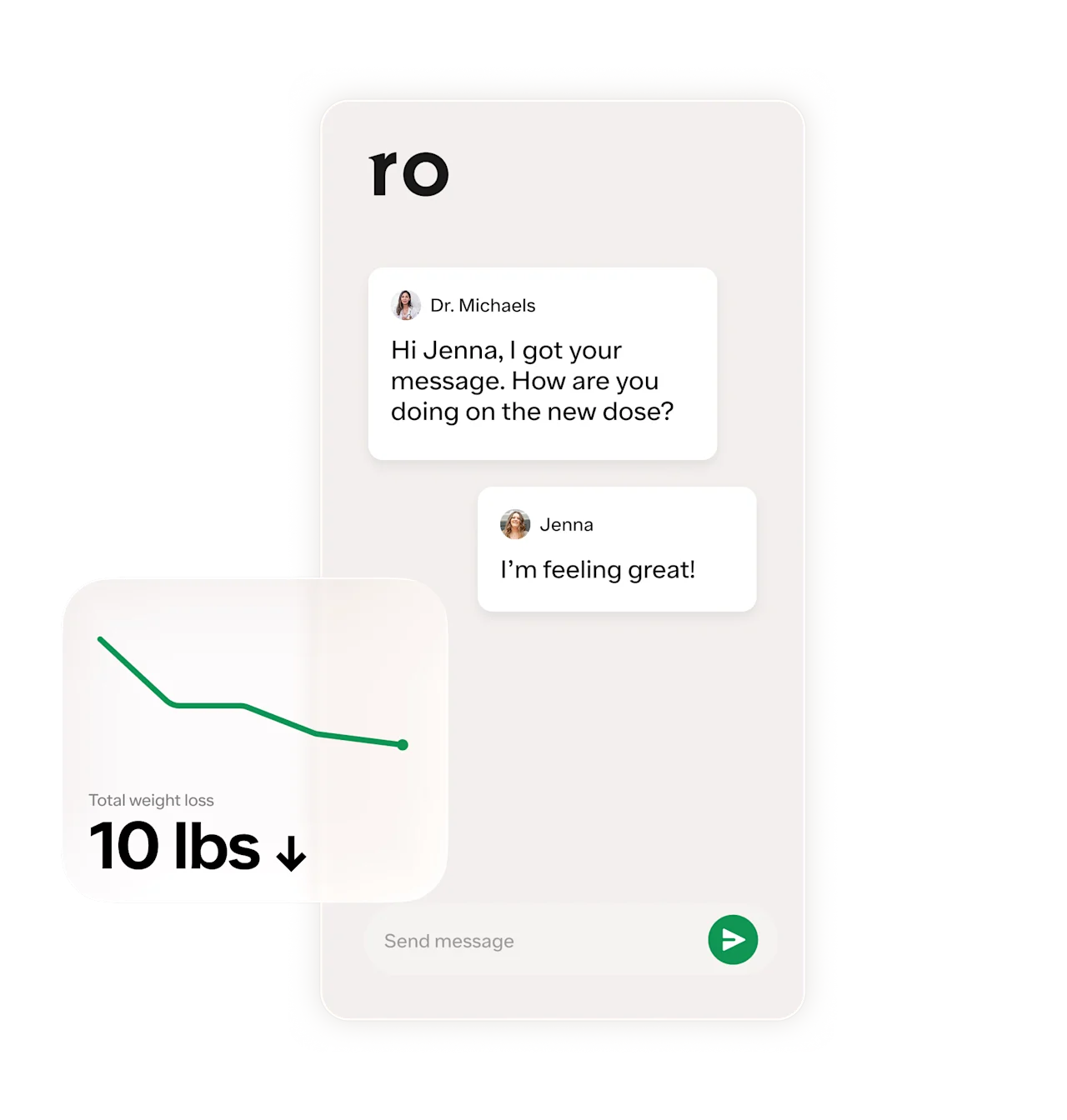Key takeaways
Nausea is the most common side effect of semaglutide, affecting between 20% to 50% of people taking Ozempic, Wegovy, or Rybelsus.
Semaglutide nausea is usually worse when starting semaglutide or during dose increases. It typically gets better with time.
You can manage semaglutide-related nausea with a few simple strategies, such as adjusting your diet, staying hydrated, and taking anti-nausea medication.
Here's what we'll cover
Key takeaways
Nausea is the most common side effect of semaglutide, affecting between 20% to 50% of people taking Ozempic, Wegovy, or Rybelsus.
Semaglutide nausea is usually worse when starting semaglutide or during dose increases. It typically gets better with time.
You can manage semaglutide-related nausea with a few simple strategies, such as adjusting your diet, staying hydrated, and taking anti-nausea medication.
Semaglutide and nausea often go hand-in-hand. In fact, semaglutide, the active ingredient in Wegovy, Ozempic, and Rybelsus, may cause nausea in close to half of people taking Wegovy and up to 20% of people taking Ozempic or Rybelsus. But why does semaglutide cause nausea, and what can you do to relieve this frustrating side effect?
Read on as we explore what causes semaglutide nausea and share ten tips for reducing nausea on Ozempic, Wegovy, and Rybelsus.
Does semaglutide cause nausea?
Yes, semaglutide can cause nausea. In fact, nausea is the most common side effect of semaglutide.
In clinical studies, nausea appears to be a dose-dependent side effect of semaglutide, which means that it is more common with higher doses. So, people taking the highest FDA-approved doses of Ozempic, Rybelsus, and Wegovy tend to have more nausea than those taking lower doses. However, higher doses have also been shown to be more effective at treating diabetes and causing weight loss.
The good news? Nausea tends to be most common when starting semaglutide and when increasing your dose. Plus, it typically goes away with time as your body gets used to the medication. And for most people, nausea is manageable with a few tips and tricks (more on that in a bit).
Rx weight loss with Ro
Get access to prescription weight loss medication online
Why does semaglutide cause nausea?
Researchers aren’t 100% sure why semaglutide causes nausea, but they have a few theories. The first theory hinges on how the drug works.
Semaglutide, a glucagon-like peptide-1 receptor (GLP-1) agonist, works by activating GLP-1 receptors throughout the body, including the pancreas, gut, and brain. This leads to several effects, like slowing down gastric emptying, i.e. the process in which food exits your stomach and enters into the small intestine. Delayed gastric emptying can help you feel full longer, but it can also lead to nausea — even in people who aren’t taking semaglutide. It can also cause other side effects common to semaglutide, such as vomiting, bloating, and abdominal pain.
In addition to slowing down gastric emptying, GLP-1 medications like semaglutide can also affect the brain, regulating your appetite, increasing feelings of fullness, and decreasing “food noise.” But studies of animals suggest that semaglutide’s effect on the brain can also produce a nausea response.
It’s also possible that what you’re identifying as nausea may actually be a feeling of intense fullness. If your healthcare provider doesn’t fill you in on how semaglutide works, you may not be prepared for how full you’ll likely feel — and so you may keep eating the same amount as you used to prior to taking semaglutide, even though there’s now less room in your stomach. This can lead to intense feelings of fullness, nausea, and bloating.
For many people on semaglutide, nausea is mild and lessens with time as your body adjusts to the medication. But there are times when severe nausea can be a sign of something more serious, such as pancreatitis, kidney injury, or gallbladder problems. If your nausea feels severe, doesn’t go away, or is accompanied by any of the following symptoms, seek emergency medical attention right away:
Persistent vomiting or diarrhea
Severe stomach pain that may or may not radiate to your back
Jaundice (yellowing of the skin or eyes)
Fever
Clay-colored stool
How long does semaglutide nausea last?
Read some reviews of Ozempic, and you’ll see that how long semaglutide-related nausea lasts depends on the person. In general, though, the side effect is usually worse when you first start taking semaglutide and when increasing your dose. And how long nausea lasts can depend on which version of the drug you’re taking since they all follow different titration schedules:
Ozempic and Rybelsus: It usually takes 8–12 weeks to reach the highest maintenance dosage of Ozempic or Rybelsus. For many people, semaglutide nausea may resolve by the time a maintenance dose is reached. For others, nausea may last several more months.
Wegovy: It can take up to 20 weeks to reach the highest maintenance dosage of Wegovy. Nausea tends to peak around the time of dose escalation and then drops significantly.
How to relieve semaglutide nausea: 10 tips
Looking for ideas on how to relieve semaglutide nausea? Try these ten tips.
1. Talk to your healthcare provider about your dose
As discussed, semaglutide medications are started at a low dose that’s slowly increased over several weeks. The goal is to reach a dose that’s effective and tolerable for you. The word “tolerable” is key here. If you ever feel like the side effects are becoming too much, tell your healthcare provider.
They can slow down your dosing schedule, giving your body more time to adjust. Or, if you’ve already reached the highest maintenance dosage of semaglutide, they can titrate you back down to a lower dose before trying a higher dose again. All three forms of semaglutide — Ozempic, Wegovy, and Rybelsus — are available in multiple dosage strengths for this reason. The point is to find the most effective, most tolerable dose for you that allows you to continue treatment with semaglutide.
2. Adjust your eating habits
Starting semaglutide often comes with a lot of big changes — weekly injections, a new exercise routine, and a new diet. Semaglutide changes how quickly your body digests food, so you may not be able to eat as much as you used to. The way you eat can make a big difference in how comfortable you feel while taking semaglutide.
Here are some ways to adjust your eating habits for more success — and less nausea — on semaglutide:
Only eat when you’re hungry, and stop eating once you feel full. It may sound obvious, but hear us out. Because semaglutide slows down digestion, you’ll have to rely more on how you feel — vs. how much food is left on your plate — to know when you’re full.
Practice mindful eating. Mindful eating focuses on eating without distractions, paying attention to how the food feels and tastes in your mouth. Being more mindful can help you start to recognize when you’re full and when you’re really hungry. It can also help you avoid overeating and get more satisfaction from your food.
Eat smaller meals, more often. For people taking semaglutide, experts often recommend eating smaller meals more often as opposed to larger meals less frequently. Like mindful eating, this can help you gain better awareness of your hunger and fullness cues. It also reduces the likelihood of overeating and inducing nausea.
3. Avoid trigger foods
Several foods are notorious for causing nausea. So if you’re experiencing nausea on semaglutide, you’ll want to steer clear of anything that is fried, processed, spicy, fatty, or super salty as much as possible. Experts also typically recommend avoiding caffeine, alcohol, and carbonated beverages. Finally, avoid foods with strong smells.
Here are some specific foods to avoid while taking semaglutide:
Burgers
Fast food
Sausage
French fries
Chips
Sausage
Canned foods
4. Eat foods that are easy on the stomach
When you’re feeling queasy from semaglutide, it’s a good idea to eat foods that are easy to digest. Experts generally recommend bland foods — bonus points if they have a lot of water in them (staying hydrated can help relieve GI side effects).
Examples of bland foods to consider eating may include:
Crackers
Toast
Baked chicken or fish
Potatoes
Noodles
Soup
Popsicles
Gelatin
Liquid yogurt
Some foods can even help relieve nausea, specifically, such as crackers, apples, and ginger. If you’re taking Rybelsus, the oral form of semaglutide, just make sure to wait at least 30 minutes after your dose to eat anything (including any other medication).
5. Try ginger
Speaking of ginger, it may just be one of the best things you can eat when you’re feeling nauseated. Ginger has been studied for its anti-nausea properties in many situations, from pregnancy to chemotherapy. To relieve semaglutide nausea, you can try a ginger chew or sip on some ginger tea. You may want to avoid ginger ale, however, as the carbonation may worsen nausea (plus, some ginger-based sodas may contain a lot of sugar).
You can even take a ginger supplement in a gummy, powder, or capsule form. Some research suggests that taking 1,500 mg of ginger per day, divided into doses (e.g. two to three times per day), can relieve nausea. When adding a new supplement to your routine, it’s a good idea to check in with your healthcare provider to make sure it won’t interact with any medications you’re taking.
6. Stay hydrated
Staying hydrated is important, period, but it’s even more crucial when you’re dealing with semaglutide side effects like constipation, vomiting, and nausea. Dehydration can make nausea worse, so drinking water regularly is important if semaglutide is making you feel queasy.
For the best results, sip water throughout the day and try to eat foods that are high in H20 content, such as soup. You can also drink certain herbal teas, sports drinks, or flat sodas. Just check the sugar content first to avoid spiking your blood sugar or disrupting your weight loss success. Also, avoid drinking too fast or using a straw — two tendencies that can exacerbate nausea on semaglutide.
7. Go for a light walk after you eat
If you’re feeling up to it, some fresh air and a light walk can work wonders for nausea. Don’t go crazy, though; vigorous exercise, especially after eating, may make you feel worse.
A nice, easy stroll is what you’re aiming for. Plus, it may help relieve other GI side effects you’re experiencing, such as bloating, gas, and general stomach pain or discomfort. One study found that walking for 10–15 minutes after a meal significantly relieved these symptoms.
If walking feels like too much, continue to rest — but stay in an upright position. Lying down after you eat can worsen nausea.
8. Keep a diary
If you notice your nausea feels worse on some days more than others or if you’re just curious about what might be contributing to it, take notes. Keep a daily log of what you ate and when, the medications you took (including the time of your last semaglutide dose), and anything else you did that might be relevant, like, say, riding a roller coaster at your favorite theme park.
Keeping notes can help you identify what’s triggering your nausea. You may also find it worthwhile to write down what you did to feel better, so you can see what seems to work best for you.
9. Look into anti-nausea medication
In most cases, semaglutide nausea can be managed without additional medication. But if strategies like adjusting your dose (under the care and guidance of your healthcare provider!) and making a few tweaks to your lifestyle don’t work, your provider may suggest medication.
Over-the-counter (OTC) options, such asdimenhydrinate (Dramamine), and prescription medications, such as ondansetron (Zofran) and metoclopramide (Reglan), may be useful. Remember that these medications may not be appropriate for everyone, so be sure to talk to your healthcare provider before you try them.
10. Consider semaglutide alternatives
While semaglutide can be a safe and effective medication for weight loss, type 2 diabetes, and more, it’s not the right fit for everyone. Up to 12% of people may stop taking semaglutide due to the drug’s side effects. Fortunately, there are other options.
Semaglutide is one of many GLP-1 medications, some of which could be more affordable than semaglutide. Other GLP-1s include tirzepatide (which is also a GIP; brand names Mounjaro, Zepbound), liraglutide (brand names Saxenda, Victoza), and dulaglutide (brand name Trulicity). If semaglutide isn’t working for you, ask your healthcare provider if another option might be a better fit.
Bottom line
Semaglutide can be a life-changing medication, but it’s not without side effects. Nausea is the most common among them. The good news is that it’s usually temporary and manageable with the right strategies.
Nausea is most common in the first few weeks of starting semaglutide or after a dose increase. How long it lasts depends on which brand-name version you use. Luckily, nausea usually fades away as your body adjusts to the medication.
You can relieve semaglutide nausea in many ways, like making small changes to your diet. Eat smaller meals made of bland foods, avoid trigger foods, and stop eating when you feel full.
Ginger and water can be your new best friends. To soothe your stomach, try ginger chews or tea, and sip water slowly throughout the day.
Anti-nausea medications may offer relief, but they’re usually not recommended unless other strategies, like lowering your dose, haven’t worked. In this case, your healthcare provider may recommend medications like dimenhydrinate and ondansetron.
Pay attention if your symptoms worsen. If your nausea is severe, persistent, or comes with symptoms like fever or intense stomach pain, seek emergency medical attention.
Frequently asked questions (FAQs)
Why do I feel so sick on semaglutide?
Semaglutide is a powerful medication that can cause several side effects, especially when you first start taking the medication. Gastrointestinal side effects like nausea and vomiting are common during the first weeks to months of treatment, as are other side effects like headache and fatigue. Most of these side effects go away with time as your body adjusts to the medication.
How do you get rid of nausea from semaglutide?
To decrease nausea from semaglutide, stay hydrated and avoid trigger foods (e.g. anything spicy, fatty, fried, salty, or processed). Instead, eat bland, water-rich foods like crackers, soup, or ginger tea. Also, practice eating slowly and stopping when you feel full. Eating smaller meals more frequently, as opposed to a few large meals, can help.
Do Tums help with Ozempic nausea?
Calcium carbonate (Tums) may help with Ozempic nausea, as well as other semaglutide side effects like heartburn and indigestion. There are also other over-the-counter and prescription medications that can relieve semaglutide nausea. Ask your healthcare provider which may be the best option for you. Remember that these types of medications are usually intended to be used in the short term and are not typically recommended as a longer-term fix.
DISCLAIMER
If you have any medical questions or concerns, please talk to your healthcare provider. The articles on Health Guide are underpinned by peer-reviewed research and information drawn from medical societies and governmental agencies. However, they are not a substitute for professional medical advice, diagnosis, or treatment.
Wegovy Important Safety Information: Read more about serious warnings and safety info.
Ozempic Important Safety Information: Read more about serious warnings and safety info.
Mounjaro Important Safety Information: Read more about serious warnings and safety info.
Zepbound Important Safety Information: Read more about serious warnings and safety info.
Saxenda Important Safety Information: Read more about serious warnings and safety info.
GLP-1 Important Safety Information: Read more about serious warnings and safety info.
References
Anderson, J., Gavin, J. R., 3rd, Kruger, D. F., et al. (2022). Optimizing the Use of Glucagon-Like Peptide 1 Receptor Agonists in Type 2 Diabetes: Executive Summary. Clinical Diabetes : A Publication of the American Diabetes Association, 40(3), 265–269. doi: 10.2337/cd22-0020. Retrieved from https://pmc.ncbi.nlm.nih.gov/articles/PMC9331622
Anh, N. H., Kim, S. J., Long, N. P., et al. (2020). Ginger on Human Health: A Comprehensive Systematic review of 109 randomized controlled trials. Nutrients, 12(1), 157. doi: 10.3390/nu12010157. Retrieved from https://pmc.ncbi.nlm.nih.gov/articles/PMC7019938/
Bodagh, M. N., Maleki, I., & Hekmatdoost, A. (2018). Ginger in gastrointestinal disorders: A systematic review of clinical trials. Food Science & Nutrition, 7(1), 96–108. doi: 10.1002/fsn3.807. Retrieved from https://pmc.ncbi.nlm.nih.gov/articles/PMC6341159/
Cabou, C. & Burcelin, R. (2011). GLP-1, the gut-brain, and brain-periphery axes. The Review of Diabetic Studies, 8(3), 418–431. doi: 10.1900/RDS.2011.8.418. Retrieved from https://pmc.ncbi.nlm.nih.gov/articles/PMC3280675/
Collins, L. & Costello, R. A. (2024). Glucagon-Like Peptide-1 Receptor Agonists. StatPearls. Retrieved from https://www.ncbi.nlm.nih.gov/books/NBK551568/
Friedrichsen, M., Breitschaft, A., Tadayon, S., et al. (2021). The effect of semaglutide 2.4 mg once weekly on energy intake, appetite, control of eating, and gastric emptying in adults with obesity. Diabetes, Obesity and Metabolism, 23(3), 754–762. https://doi.org/10.1111/dom.14280. Retrieved from https://dom-pubs.onlinelibrary.wiley.com/doi/10.1111/dom.14280
Gill, L. & Mackey, S. (2021). Obstetrician-Gynecologists' Strategies for Patient Initiation and Maintenance of Antiobesity Treatment with Glucagon-Like Peptide-1 Receptor Agonists. Journal of Women's Health, 30(7), 1016–1027. doi: 10.1089/jwh.2020.8683. Retrieved from https://pmc.ncbi.nlm.nih.gov/articles/PMC8290308/
Gorgojo-Martínez, J. J., Mezquita-Raya, P., Carretero-Gómez, J., et al. (2022). Clinical Recommendations to Manage Gastrointestinal Adverse Events in Patients Treated with Glp-1 Receptor Agonists: A Multidisciplinary Expert Consensus. Journal of Clinical Medicine, 12(1), 145. doi: 10.3390/jcm12010145. Retrieved from https://pmc.ncbi.nlm.nih.gov/articles/PMC9821052/
Hayes, M. R., Borner, T. & De Jonghe, B. C. (2021). The role of GIP in the regulation of GLP-1 satiety and nausea. Diabetes, 70(9), 1956–1961. doi: 10.2337/dbi21-0004. Retrieved from https://pmc.ncbi.nlm.nih.gov/articles/PMC8576421/
Heckroth, M., Luckett, R. T., Moser, C., et al. (2021). Nausea and Vomiting in 2021: A Comprehensive Update. Journal of Clinical Gastroenterology, 55(4), 279–299. doi: 10.1097/mcg.0000000000001485. Retrieved from https://pmc.ncbi.nlm.nih.gov/articles/PMC7933092/
Hosseini-Asl, M. K., Taherifard, E., & Mousavi, M. R. (2021). The effect of a short-term physical activity after meals on gastrointestinal symptoms in individuals with functional abdominal bloating: a randomized clinical trial. Gastroenterology and Hepatology from Bed to Bench, 14(1), 59–66. Retrieved from https://pmc.ncbi.nlm.nih.gov/articles/PMC8035544/
Kommu, S. & Whitfield, P. (2024). Semaglutide. StatPearls. Retrieved from https://www.ncbi.nlm.nih.gov/books/NBK603723/
MedlinePlus. (2024). When you have nausea and vomiting. Retrieved from https://medlineplus.gov/ency/patientinstructions/000122.htm
Minari, T. P., Araújo-Filho, G. M., Tácito, L. H. B., et al.(2024). Effects of Mindful Eating in Patients with Obesity and Binge Eating Disorder. Nutrients, 16(6), 884. doi: 10.3390/nu16060884. Retrieved from https://pmc.ncbi.nlm.nih.gov/articles/PMC10975968/
Reddivari, A. K. R. & Mehta, P. (2024). Gastroparesis. StatPearls. Retrieved from https://www.ncbi.nlm.nih.gov/books/NBK551528/
Smits, M. M. & Van Raalte, D. H. (2021). Safety of semaglutide. Frontiers in Endocrinology, 12. doi: 10.3389/fendo.2021.645563. Retrieved from https://pmc.ncbi.nlm.nih.gov/articles/PMC8294388/
Wharton, S., Calanna, S., Davies, M., et al. (2021). Gastrointestinal tolerability of once‐weekly semaglutide 2.4 mg in adults with overweight or obesity, and the relationship between gastrointestinal adverse events and weight loss. Diabetes Obesity and Metabolism, 24(1), 94–105. doi: 10.1111/dom.14551. Retrieved from https://pmc.ncbi.nlm.nih.gov/articles/PMC9293236/
Wharton, S., Davies, M., Dicker, D., Lingvay, I., et al. (2021). Managing the gastrointestinal side effects of GLP-1 receptor agonists in obesity: recommendations for clinical practice. Postgraduate Medicine, 134(1), 14–19. https://doi.org/10.1080/00325481.2021.2002616. Retrieved from https://www.tandfonline.com/doi/full/10.1080/00325481.2021.2002616
U.S. Food and Drug Administration (FDA). (2025). Ozempic (semaglutide) injection, for subcutaneous use. Retrieved from https://www.accessdata.fda.gov/drugsatfda_docs/label/2025/209637s025lbl.pdf
U.S. Food and Drug Administration (FDA-a). (2024). Rybelsus (semaglutide) tablets, for oral use. Retrieved from https://www.accessdata.fda.gov/drugsatfda_docs/label/2025/213051Orig1s020,213051Orig1s021lbl.pdf
U.S. Food and Drug Administration (FDA-b). (2024). Wegovy (semaglutide) injection, for subcutaneous use. Retrieved from https://www.accessdata.fda.gov/drugsatfda_docs/label/2024/215256s015lbl.pdf


